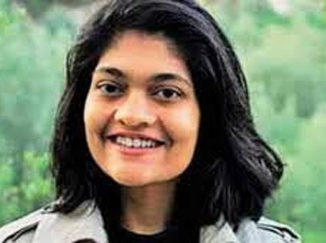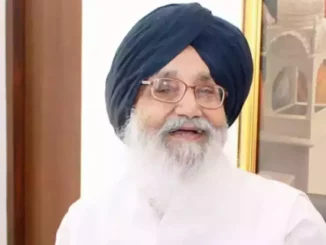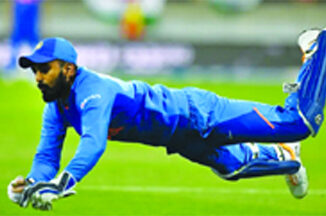

Jawaharlal Nehru’s stature and moral authority, now under attack, were the guarantors for modern India’s social contract
The mention of Jawaharlal Nehru evokes strange reactions these days, but for Congressmen such as me it is a matter of faith and symbolic of all that we hold dear to our hearts. He was the closest we could imagine of reaching our leader Gandhiji and, therefore, was the manifestation of the unmanifested. As his heir Nehru taught us, the post-Independence generation, both the ideas and their praxis, of the values of the national movement. Summable as the constitutional values, we know of them as Nehruvian values, which he called Indian or Gandhian philosophy.
A frame under strain
We have grown up under a huge pantheon (both religious and historical) which has inculcated in us a tolerance and receptivity of/for a multitude of perspectives, and an anticipation of newer ones. Today as we live through an intolerant regime and discourse, I realize what its absence leads to. The frantic attempt to appropriate some and deride others from ours is resultant of their inner emptiness.
Today the values of our national movement, duly canonized as the Constitution, are being threatened not only by a spiteful government but also through a majoritarian discourse and its progeny; a mob emboldened to declare itself the nation and law. Our institutions are under severe stress mainly because there is an apprehension that the Constitution may not be able to protect them from this onslaught. Yet we need to look back and see how in far more difficult times our leadership had held on to their values; yes, we miss them today.
Continuing the fight
I recall how Panditji and Sardar Patel missed Gandhiji in those difficult times. In a letter in 1950 to K.G. Mashruwala talking of the problems emanating from East Pakistan and West Bengal, Panditji says that “ merely to preach goodwill irritates people when they are excited. Bapu might have done it, but we are too small for this kind of thing.” But his faith in the people of this country and their values helped him tide over such tragedies. He proudly declared that the revered ‘Bharat Mata’ was none other than the teeming millions populating this land. It was the same belief that Gandhiji had in the poor and illiterate masses in this country, who held on to their civilizational values of truth, non-violence and tolerance. This is what led Gandhiji to pronounce him his inheritor, and at a session where he had passed a resolution questioning ‘doctrinaire nonviolence’; Gandhiji declared, “When I am gone, he will do what I am doing now.”
Yes, Gandhiji died fighting the communal mania and Panditji continued the fight constitutionally when on April 13, 1948, the Constituent Assembly adopted a resolution that “for the proper functioning of democracy, and the growth of national unity and solidarity… no communal organization should be permitted to engage in any of the activities other than those essential for the bonafide religious, cultural, social and educational needs of the community.”
Seen together with the conditions Sardar Patel had before lifting the ban on the Rashtriya Swayamsevak Sangh, we can say that he was just implementing the mandate of the Constituent Assembly and that what we are witnessing today is a betrayal of the Constitution. He had said in 1933 that the communalism of the majority resembles nationalism. But the test of its true nature is its relation to the national struggle, and also that laying stress on communal problems instead of national ones is obviously anti-national. These are the two litmus tests we need to always remember and they remove any iota of doubt about the nature of nationalism being put forth by the current regime.
This came from a person deeply rooted and secure in the knowledge and practice of his culture and traditions. His writings, especially The Discovery of India, is a reflection of his efforts at forging a relation of both transcendence and immanence with his nation and culture. His conviction in the enlightened middle path of the Buddha was reflected in both Non-alignment and the Panchsheel, as well as his faith in a mixed economy. Not to forget were his reaffirmation of the Buddha’s and Gandhiji’s non-violence.
In his last will (June 1954), Nehru invokes the Ganga, calling her the ‘river of India’. He further writes, “Smiling and dancing in the morning sunlight, and dark and gloomy and full of mystery as evening shadows fall; a narrow, slow and graceful stream in winter, and a vast roaring thing during monsoon, broad-bosomed almost as the sea, and with something of the sea’s power to destroy, the Ganga has been to me a symbol and a memory of the past of India, running into the present, and flowing on to the great ocean of the future.”
The power of science
The firmly secure culturalist was also a radical progressive and the greatest champion of science and scientific temper. Ever since setting up the National Planning Committee in 1938 along with Netaji Subhas Chandra Bose, he had developed a deep longing for science and its use to solve national problems. He started attending almost all the annual sessions of the Indian Science Congress. He believed that inculcating a scientific temper was the greatest challenge faced by man, individually and collectively. We still see Prime Ministers addressing the sessions of the Indian Science Congress, but talking of plastic surgery of lord Ganesha. Not surprisingly Nehru is still the most vilified leader in the country because his name is synonymous with what is called the ‘Idea of India’, for his stature and moral authority were the guarantors for modern India’s social contract. It has since been rightly called the ‘Nehruvian Consensus’. Till this legitimizing presence of Nehru’s legacy pervades, the reactionary and revisionist discourse can never gain any foothold in the country. Therefore, the worst of the propaganda machinery is deployed on a leader who has been dead for 55 years.
The internationalist ‘Messenger of Peace’, who was often the last hope of the world when all machinations had failed and peace looked fragile, was both a recognition of India as well as the heir of Gandhi. This was evident in U.S. President Dwight D. Eisenhower’s letter to Panditji (April 30, 1958) telling him not to retire as the world needed him. He knew that great fame awaited him but was ready for its travails. In 1937, he reminded himself through his article “We want no Caesars”. But how prophetic his words prove today when he said, “He might still use the language and slogans of democracy and socialism, but we all know how fascism has fattened on this language and then cast it away as useless lumber.”
(The author is the Chief Minister of Chhattisgarh)





Be the first to comment